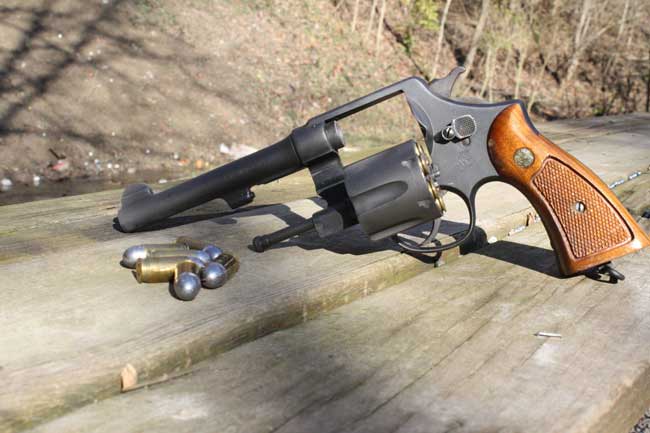The only other gun I like to shoot as much as this old .45 caliber S&W, is the Mk. VI Webley .455. These guns have a lot going for them, and it is a shame to see them passed over in their respective militaries for lesser arms.
This Smith is a version of the 1917 hand ejector model built for WW1, and was part of a shipment of 25,000 guns sold to the Brazilian Government in 1938. It was re-imported in 1990 and was popular on the used gun market, and was cheap at the time. Getting one now is another matter. This gun has been parkerized, and I'm not sure if they were originally, I suspect they were all blued. It needs to use moon clips on the bullets in order to extract them, as auto pistol ammunition has no rim to grab onto, but they make for dandy speedloaders, although a lot of reloads in your pocket makes quite a bulge.

There isn't much difference between this gun and a Mk VI. They both shoot a fat manstopping bullet. Both companies have been making revolvers for roughly the same amount of time, although I think Webley was first by 5 years. American revolver companies took to the swing out cylinders, where Webley tried them out, didn't like them, and the rest was history. They say a break top revolver is weaker than a solid frame gun, and that is true, however, Webleys have been responsible for the deaths of numerous big game animals in India and Africa, so I imagine their revolver is strong enough.
I've been using some cheap cast bullets from a local guy, and they leave a lot of lead in the barrel. Very disturbing. The bullets are the right size, and I've tried slowing them done a bit, and now they're running about 650 feet per sec, around Webley velocity and it's getting better. I like Webley's hollow base bullet a lot more than these flat base bullets and I think they would do better. All in all, shooting this revolver made for an enjoyable afternoon.